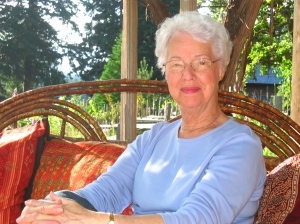Conduct a Successful Interview
As with all things, there are tricks to a successful interview. Start by taking time to develop a relationship with your interviewee before you launch into your questions. And begin with the easy subjects, moving on to the harder issues later. Sometimes an interviewee will redirect the conversation to an unexpected topic, with passion. If it’s relevant let them run with it! For those who give no more than yes and no answers, perhaps your questions aren’t opened ended, the kind that call for a detailed response? Or maybe they’re nervous. Can you win them over and get them to open up? If not, you probably don’t have the right interviewee.
Start the interview by taking notes. If you find the person is a natural raconteur, ask for permission to tape the session. A small tape recorder is unobtrusive. Choose one you can plug into your computer later for transcription. The sight of a recorder will sometimes intimidate an otherwise chatty interviewee, no matter how small the recorder is. You may have to stick with note-taking. In fact, it’s wise to continue with notes even when you are taping—as a backup.
If your source tells you they can see a certain place clearly in their mind—don’t let them stop there. Ask them to describe it to you. This is the stuff you’re looking for. Your job throughout is to probe for more.
Be careful not to judge what your informant tells you, even if you feel it’s inaccurate. Your job is to be an active, attentive listener. You want their perspective on the subject.

Conduct your interview in a comfortable setting, with minimal distractions. Alda Cote traces her ancestry in Quebec back to the early 1600s.
It seldom works to interview more than one person at a sitting. When you listen to the tape later it’s hard to discern who is speaking, and people are rarely as candid in a group. Looking at old photos during an interview is also problematic. They’re great memory teasers for a pre-interview conversation, but if viewed during an interview the discussion can be a puzzler to follow later on: “Yeah, the girl on the left was my first….”
You should get a signed release for the interview, giving you the right to use the material. Put the date and the interviewee’s name on the tape or disk, or better yet, say these details at the start of taping.
It’s not necessary to transcribe the whole tape, word for word, just type the pertinent parts and potential quotes. Honour your interviewee by writing down exactly what they said, using punctuation devices that respect the fact that no one speaks as they would write. People often change tact in the middle of a sentence, for instance. There’s no need to leave in their false starts in the quotes you use.
If you conduct your interview with notes, it’s smart to type them soon after, while you remember details. I like to send the transcript to the person to get their input because it’s so easy to make mistakes with spellings and nuances in note-taking.
The more people you interview and consult, the bigger the following you’ll build for your end product. Get everyone’s contact info and send them an invitation to your launch.
Enjoy your interviews. You’ll meet some fascinating people with incredible stories and insights to share.
